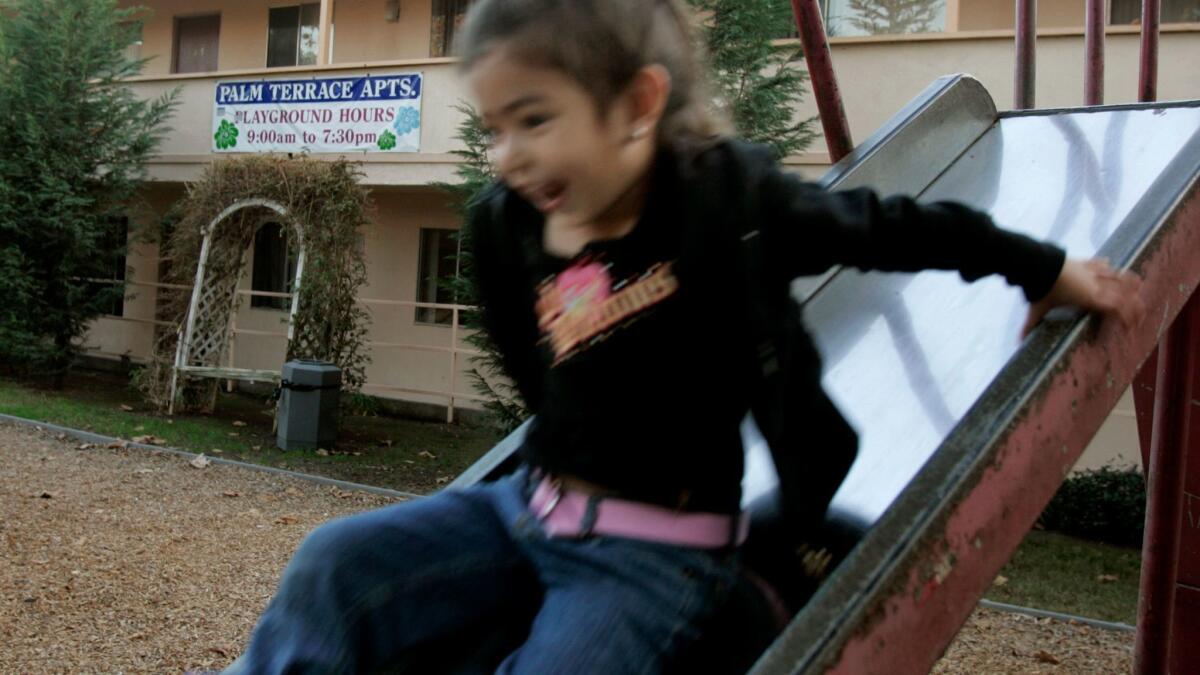What does it mean to have ‘green’ test scores? The state delays a vote

A good school is hard to define.
That much was clear at Wednesday’s State Board of Education meeting.
The board has been in the process of overhauling its system for rating schools since the state suspended its old system in 2015. That system included numerical ratings and relied heavily on test scores. Its replacement ultimately will draw from an array of different variables — attendance, suspension rates, English language acquisition — to try to make ratings better reflect the complexity of California’s schools.
In a previous meeting, the group voted to move toward a color-coded system: red for schools that need extra help, green for schools doing well.
But it’s been harder to agree on details.
On Wednesday, the board delayed a vote on a proposal to define those test scores that would have given a school a green rating for academics. The initial cutoffs were at least 51% of students proficient in math and 60% in English/language arts, with that performance maintained from year to year, on state standardized tests.
Samantha Tran, senior managing director of education policy for the advocacy organization Children Now, was one of those who argued that those thresholds were far too low. “If half our kids didn’t reach a high standard, but their schools are marked as green, that sends the wrong message,” she said before the meeting.
On Wednesday, Cindy Kazanis, of the education department’s Measurement and Accountability Division, said her team wanted to go back to the drawing board to suggest new cutoff points based on an aggregate of scaled scores instead of the percentage of students reaching certain benchmarks, which would be more statistically sound. Scaled scores are raw scores — the number of points a student earns — adjusted to better reflect individual students’ levels of accomplishment.
“We need to come back to what the meaning behind those scores are,” said Keric Ashley, deputy superintendent of public instruction — and board members agreed.
With that complicated decision tabled, the board turned to another major shift in education: the Local Control Funding Formula, passed in 2013, which allots a certain amount of money for each child, plus extra if that child has special needs.
The state law was intended not only to make school funding fairer but to give families more input into their schools. To that end, it required that districts write “Local Control Accountability Plans” describing how they are using Local Control dollars to satisfy the law’s priorities, which include a special focus on vulnerable populations such as foster youth.
But the planning documents, which were supposed to give families more information, have been criticized as lengthy and impenetrable. On Wednesday, the board voted on an updated template that streamlines descriptions and forces districts to write “narratives” describing their plans.
To show how they are fulfilling the Local Control priorities, districts must perform self-assessments. The board voted Wednesday to approve a few specific assessments for areas including how to determine whether districts are adequately serving foster kids or improving their schools’ culture.
Some who attended the meeting expressed concerns that not all such self-assessments are required to be made public beyond school board meetings. “I want to make sure that we don’t support a culture of complacency,” said Sandy Mendoza, advocacy manager for the nonprofit group Families In Schools.
The state also is developing its plan to satisfy the federal Every Student Succeeds Act, which is the less punitive successor to No Child Left Behind. But state officials contend they can’t get too far until regulations are finalized and they know the priorities of the new president.
On Wednesday, the board gave state schools chief Tom Torlakson and board president Mike Kirst the authority to write a letter opposing the proposed federal guidelines because they disrupt some of the state’s work on devising its school ratings system.
The board also voted to withhold $271,952.56 from California’s $86,419,128 contract with Educational Testing Service, the company that built the state’s new standardized tests. The money was withheld because of hiccups with technology and score reporting, but officials stressed that the latest round of testing was successful overall.
You can reach Joy Resmovits on Twitter @Joy_Resmovits and by email at Joy.Resmovits@LATimes.com.
ALSO
UC regent apologizes for ‘inappropriate’ comments about women’s breasts
Some say San Diego schools are moving too fast to integrate immigrant students into classes
Editorial: Is the Los Angeles Unified School District overpromising again?
More to Read
Sign up for Essential California
The most important California stories and recommendations in your inbox every morning.
You may occasionally receive promotional content from the Los Angeles Times.










